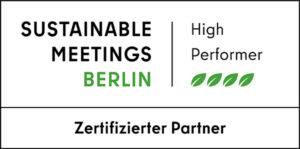Digital conference technology with DANTE

Published: 08.09.2016
What is DANTE
DANTE is a combination of hardware, software and a network protocol and stands for Digital Audio Network Through Ethernet. With DANTE it is possible to transmit multiple channels of uncompressed audio data with low latency over a network cable. DANTE is used worldwide for signal processing at events and installation.
Advantages of DANTE
Digital transmission offers several advantages over analog transmission. The signal is comparatively less susceptible to interference over longer distances and the demands on the quality of the cable are lower than for analog audio transmissions. DANTE is mainly used when several audio channels have to be transmitted over long distances and to different locations. DANTE eliminates the need for heavy copper cable, saving time and money. Complex audio networks can be clearly solved, saved, configured and adapted. The handling is simple and straightforward. DANTE works with common network technology (cables, switches) and with the DANTE software (DANTE Controller) a simple user interface is available.
Advantages for conference technology
In conference technology, we can save effort and work more flexibly with DANTE. Our speaker booths are wired in the same way and are always tied to a specific location; for example, the interpreters have to change booths when workshops change. With the flexible routing options with DANTE, we can avoid this and often save on technology and speaker booths. Likewise, we save a lot of time and effort in wiring different rooms and can often connect to colleagues' networks (including lighting technicians). With the DANTE Virtual Sound card, we can easily implement conference applications, video conferencing, WebEx/Skype and recording.
In many situations, a small setup of dante-capable devices (Yamaha QL1, Yamaha Rio 1608 Stagebox, Yamaha Rio 3224 Stagebox) is enough for us. We can no longer imagine conference technology without the digital audio network.
Future and other networks
The audio network market is in motion and several alternatives exist side by side (AVB, DANTE, AES67, Ravenna, Livewire, Q-Lan). We and our partners primarily use DANTE. The various technologies differ more in details. Whether one of the other technologies will prevail remains to be seen. However, it is already clear that working with digital audio networks has become generally accepted.





